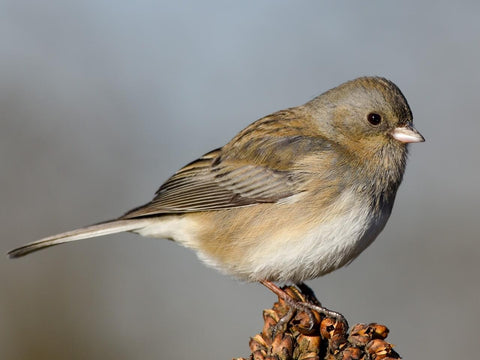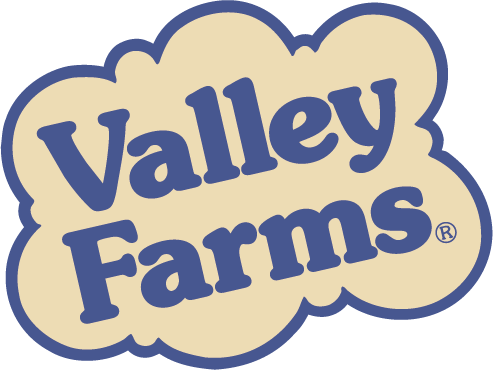
What Makes Snowbirds So Special: A Tale of Juncos
Share
As the weather cools and winter nears, it’s time to learn all about Juncos, aka snowbirds.
You may have heard the term “snowbird” before but do you know what it really means? When used in slang terminology, snowbirds refer to people who live in the north and travel south during the winter to avoid the cold. In reality, the true snowbird is actually the Junco, a beautiful songbird known for bringing snowy weather on its wings as it migrates. In fact, the Fillmore County Journal jokingly says that the word JUNCO is simply an acronym for Just Until Nicer Conditions Occur.
There are 2 species of Juncos in North America: The Yellow-Eyed Junco and the Dark-Eyed Junco, of which there are about 15 sub-species that can be categorized into 6 groups. A varied species, Juncos may be some of the most widespread sparrows across the continent.

Yellow-Eyed Junco
Physical Characteristics of Juncos
Despite their variability, Juncos have several shared physical characteristics. Juncos are medium-sized songbirds; they are generally dark gray or brown-colored with a pale, light pink bill and white outer tail feathers. Juncos have rounded heads, long tails, stout bills, and white bellies. Beyond that, their color patterns vary by region and type.

Dark-Eyed Oregon Junco
Where to Find the Different Types of Juncos
Some regional varieties of Juncos look so distinct from one another that they were once considered separate species. This lasted until the 1970s, when interbreeding took over. Still, the 6 major groupings of Dark-Eyed Juncos are distinguishable by region and a few notable characteristics.
- Slate-Colored Junco. This Junco has the widest range, extending from Alaska and Canada down into the northeastern states and as far south into the U.S. as Georgia. Visually, slate-colored Juncos are somewhat muted in color but they set the standard for Junco looks.
- Oregon Junco. Washington, Oregon, and California have a high concentration of Oregon Juncos, especially during the summer. These birds are notoriously more colorful than their slate-colored counterparts.
- Pink Sided Junco. With pinkish sides and brown backs, Pink Sided Juncos are sometimes seen as an offshoot of the Oregon Junco. They are most commonly seen in Wyoming, southern Montana, and the east side of the Rocky Mountains.
- Gray Headed Junco. This bird is similar in looks to its counterparts but with a mostly gray hue and a reddish brown back.
- White Winged Junco. Don’t be fooled by their name; the White Winged Junco’s wings are mostly gray with the exception of two white wing bars.
- Red Backed Junco. The Red Backed Junco is the least migratory of all the Dark Eyed Juncos. It tends to stay in the same mountains of central Arizona and New Mexico throughout all seasons.

Red Backed Junco
Junco Bird Behavior
Juncos tend to be their most social selves during the autumn and winter months, in which they can be found in flocks of between fifteen to twenty five.
Juncos primarily communicate with one another through song, but it’s important to note that there is variety here as well. Only male Juncos sing; they warble to mark their territory and make “chip” sounds if they sense a predator. In addition to being the prey of owls, shrikes, and sharp-shinned hawks, Juncos must also be careful not to get snatched up by chipmunks, red squirrels, weasels, and both feral and domestic cats.
Regardless of their region, all Juncos favor staying close to the ground. They hop around tree bases and forest shrubs, occasionally poking their beaks into lawns on the quest for fallen seeds. Although Juncos spend up to 65% of their time on the ground searching for food, they will still come by bird feeders provided they are filled with the right kind of wild bird seed.

Female Slate-Colored Junco
What Juncos Eat
The typical Junco diet consists of seeds and insects as well as non-insect arthropods. While they prefer foraging for food on the ground, they will make an appearance at bird feeders during migration and the winter months, especially if the feeders are filled with their favorite seed: millet. Whether red or white, millet is the go-to wild bird seed for Juncos, with black oil sunflower seeds as a close second.
Pro tip: put the wild bird seed on a large ground tray feeder to lure them to your backyard in the winter. In the summer, Juncos are known to eat the seeds of weeds and standing grass from plants like chickweed, buckwheat, lamb’s quarters, and sorrel.
Valley Farms White Millet Wild Bird Food
$13.55

Valley Farms Deluxe Blend Wild Bird Food
$14.49

Valley Farms Super Deluxe Wild Bird Food
$13.95

Winter is on its way; are you ready for the snowbirds? Prep your bird feeders accordingly by filling them with fresh and clean wild bird seed from Valley Farms®! Shop with us today!
